TCL P755 stands out primarily due to its Google TV system, which simplifies daily use of the television. It is easy to operate, runs smoothly, and provides access to numerous applications, while personalised recommendations help quickly find something to watch. Support for AirPlay and Windows Miracast allows for easy casting from other devices. All of this makes the television a good option as a home entertainment centre. When it comes to picture quality, P755 offers solid performance for its price. Dolby Vision makes HDR content look better – colours are vibrant and contrast sharper. The wide colour gamut results in an image that is rich and natural, which is evident when watching films. Additionally, the television has a high native contrast, which distinguishes it in this price range. For gamers, the P755 could also be an interesting option. Low input lag enables smooth gameplay, and games run responsively. Of course, the 60 Hz panel does not provide ideal fluidity, and the HGiG function does not work perfectly, but for occasional gaming, this model is adequate. However, it does come with some drawbacks. Low brightness means that the image in bright rooms may be less readable, and the viewing angles are quite average. Dithering can also be an issue, causing artefacts in darker scenes, especially when using the television as a monitor – the fonts on the screen are less legible. TCL P755 is a good choice for those looking for an affordable television with features. Dolby Vision, a wide colour gamut, and low input lag are the strengths of this model. Although brightness and viewing angles could be better, it offers a lot at this price and works well for everyday viewing or occasional gaming.
- Matching (Score)
- Our verdict
- TV appearance
- Where to buy
- Contrast and black detail
- HDR effect quality
- Factory color reproduction
- Color reproduction after calibration
- Smoothness of tonal transitions
- Image scaling and smoothness of tonal transitions
- Blur and motion smoothness
- Console compatibility and gaming features
- Input lag
- Compatibility with PC
- Viewing angles
- TV efficiency during daytime
- Details about the matrix
- TV features
- Apps
- Playing files from USB
- Sound
TCL P755 vs Hisense U7Q
Direct compare
P755
U7Q / U78Q

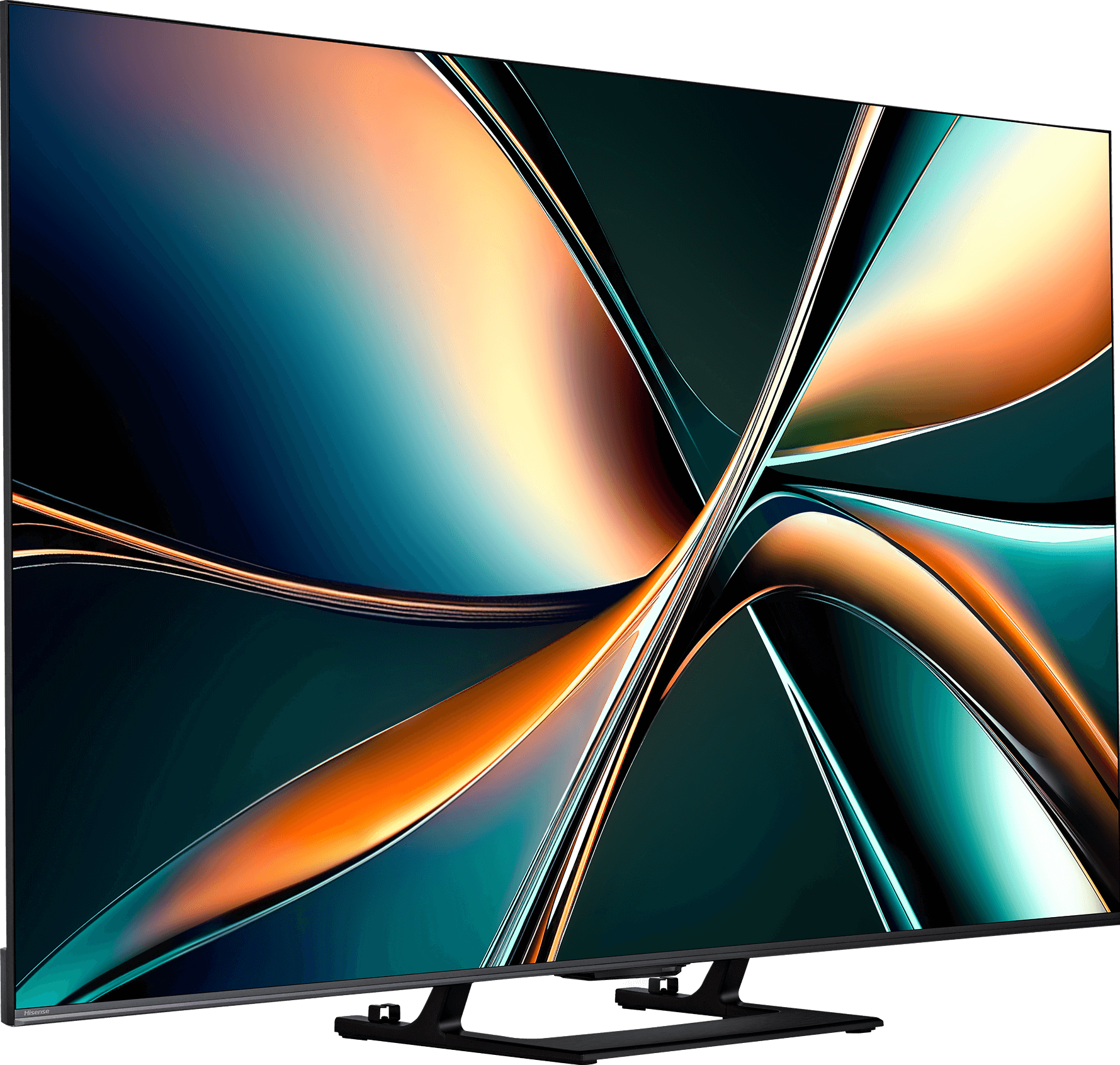
Panel type: LCD VA
Resolution: 3840x2160
System: Google TV
Model year: 2024
Complete the survey to find out the result

Panel type: LCD VA
Resolution: 3840x2160
System: VIDAA
Model year: 2025
Complete the survey to find out the result

Overall rating
5.8
7.1
Movies and series in UHD quality
5.8
6.6
Classic TV, YouTube
6.0
6.8
Sports broadcasts (TV and apps)
5.1
6.5
Gaming on console
6.8
8.0
TV as a computer monitor
2.5
8.6
Watching in bright light
3.8
6.2
Utility functions
7.7
8.9
Apps
9.6
7.7
Sound quality
5.8
7.2
Complete the survey to find out what fits your preferences
Advantages
High native contrast
Support for advanced features for gamers
Advanced Google TV operating system
Low input lag
Support for all HDR formats
Support for all Dolby and DTS audio formats
Great contrast and deep blacks
Very good fluidity of tonal transitions (close to reference level)
High brightness
Support for 4K 144 Hz and even 240 Hz in Full HD
VRR, ALLM, G-SYNC – a complete package for gamers
Low input lag
Pleasant sound with light bass
Many classic TV features built into the VIDAA system
Disadvantages
Low brightness
Average viewing angles
Incorrectly functioning HGiG mode
Poor font readability
No support for HGiG (makes setting HDR on consoles difficult)
Brightness management issues
Poor viewing angles – typical for VA panels
Closed VIDAA system – lack of certain applications
Our verdict
The Hisense U7Q is one of the most interesting Mini-LED televisions in its price segment, clearly demonstrating that Hisense is beginning to make a mark in the market not only through its price-to-performance ratio but also due to its increasingly refined picture quality. Let's start with what truly impresses: the contrast and black levels are at a level that not long ago was unattainable in this price range. Combined with smooth tonal transitions, solid brightness, and a fast 144 Hz panel, the U7Q becomes a television that excels in both movies and gaming. Gamers will find almost everything they could expect here – variable refresh rate (VRR) support, automatic low latency mode (ALLM), very low input lag, and even 240 Hz in Full HD. All of this makes the U7Q compatible with both next-gen consoles and PCs. However, there are some weaker points. With HDR content, one might say: "untapped potential" – you might ask why? The television, due to its algorithms, dims small bright elements or over-emphasises them, which can ruin the viewing experience. There is also a lack of support for HGiG, a feature that would allow for better calibration of the console with the television regarding HDR. In summary, briefly – the Hisense U7Q is a very versatile and complete television that has its imperfections but makes up for them in many key aspects. For gamers, for the occasional movie viewer, for someone looking for good equipment for everyday use – it is one of the most cost-effective offerings in 2025. You just need to know what compromises you are signing up for – and then it will be hard to be disappointed.
TV appearance





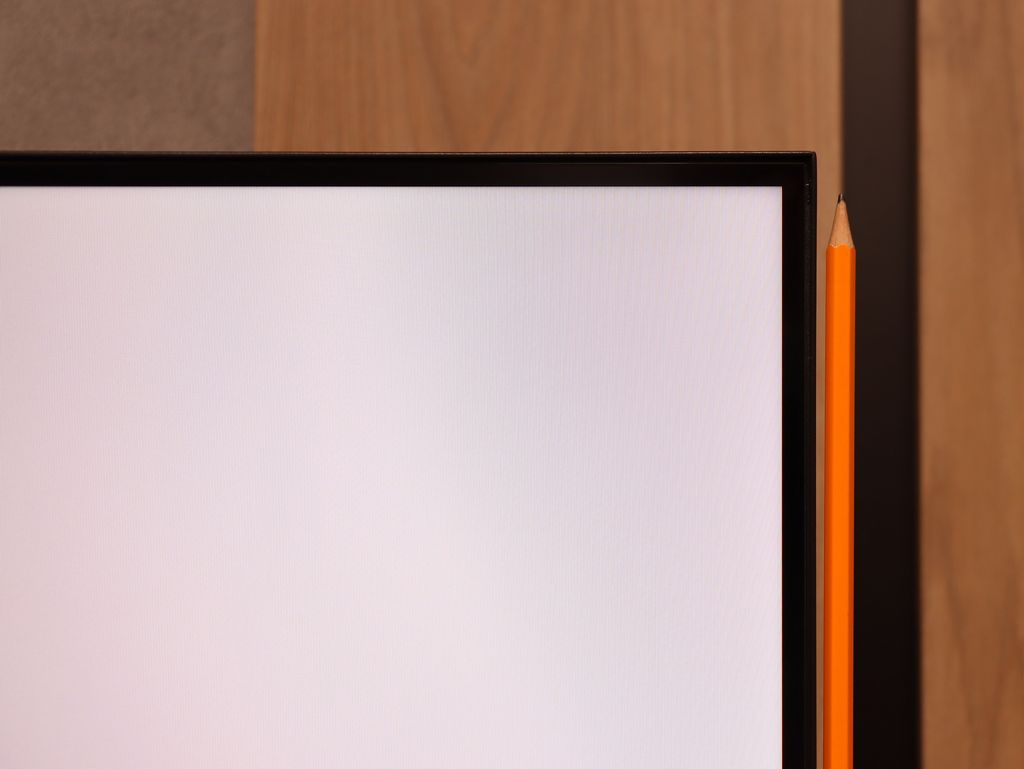
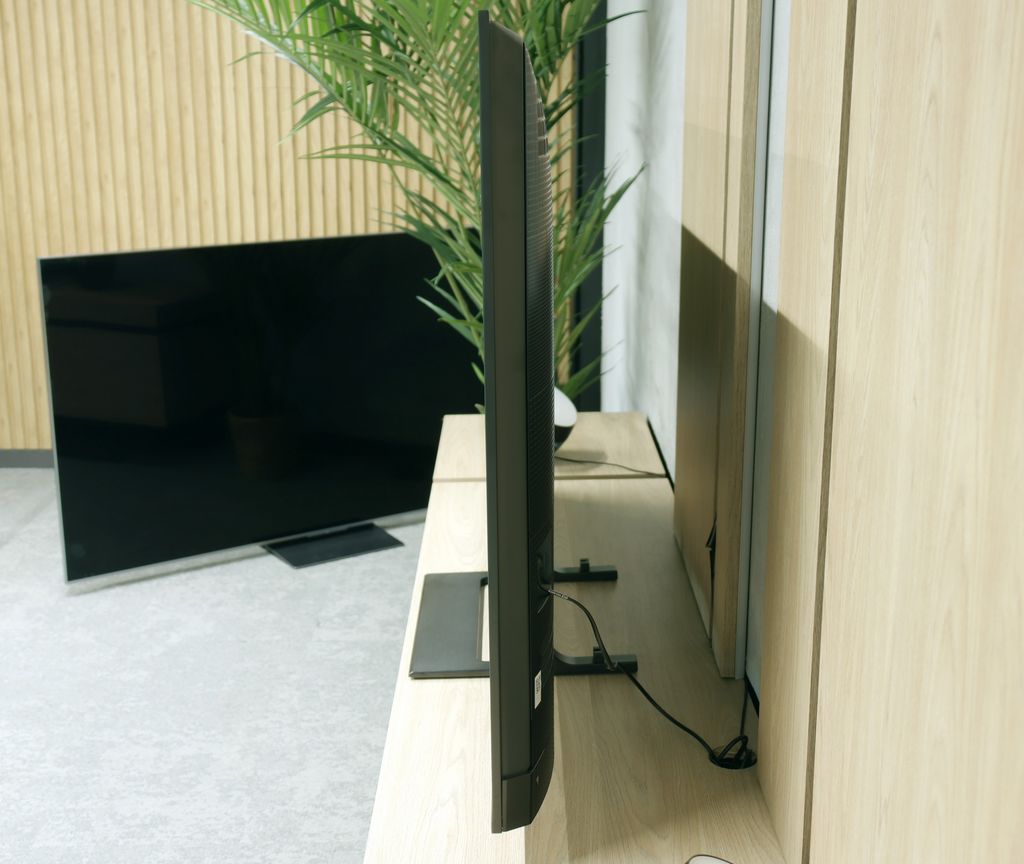
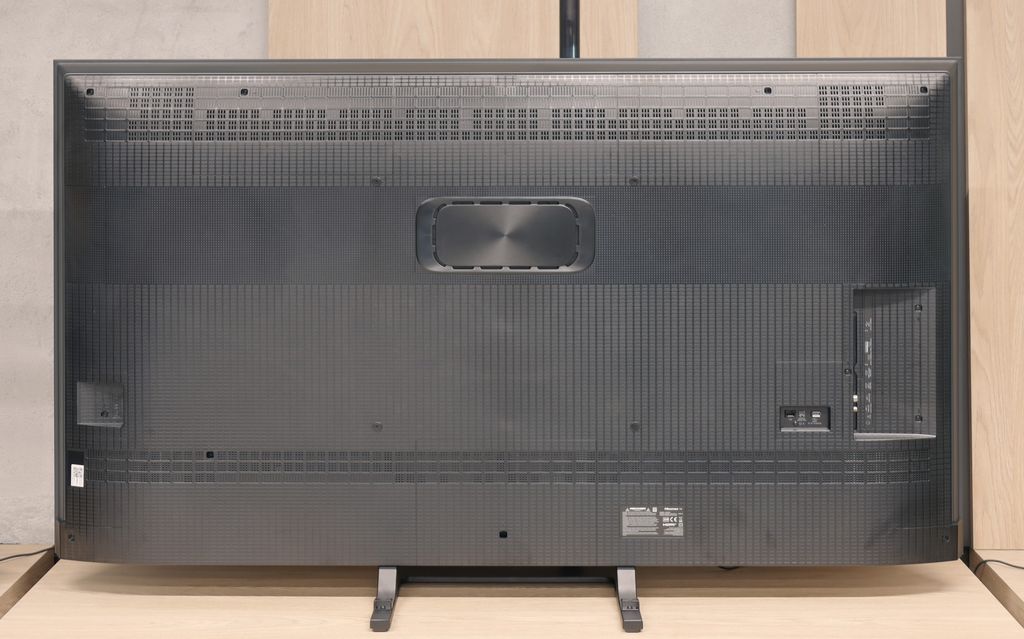
Contrast and black detail
6.1/10
7.5/10
Local dimming function: No
Local dimming function: Yes, number of zones: 220 (10 x 22)
Contrast:

Result
5,650:1

Result
6,750:1

Result
5,850:1

Result
6,550:1

Result
6,100:1

Result
278,000:1

Result
28,800:1

Result
11,100:1

Result
10,800:1

Result
6,250:1
Halo effect and black detail visibility:


TCL P755, equipped with a VA panel, offers very high contrast, which translates to deeper blacks and better detail representation in darker scenes than in the case of IPS/ADS panels. The panel in this model has an exceptionally high native contrast. In film mode, contrast is a strong point of the television, but the lack of local dimming technology means that blacks are not perfectly deep. They often take on shades of navy, which can be particularly noticeable in dark movie scenes. During the test with the film Sicario 2 , certain flaws were also noted in the form of uneven backlighting, which can distract from important details in the blacks, lowering the overall immersion in the scenes. However, it should be remembered that this comment refers to the sample we tested; nonetheless, it is worth bearing in mind that similar shortcomings may occur in other units.
The U7Q is a television with Mini-LED backlighting – just like the PRO version. The difference? The version without the suffix simply has fewer dimming zones. In our 65-inch model with a VA panel, we counted 220 of them. And although this doesn't make as much of an impression as in the U7Q PRO, it still looks very good on paper for this price range. Alright, but how does it perform in practice? Surprisingly well. The contrast in the U7Q can reach as high as 300,000:1, which gives a really solid black effect. In many scenes, it's hard to find fault – the picture has depth, and the highlights are well separated. Of course, Mini-LED is not OLED – so there are certain limitations. In very challenging scenes with a lot of dark details, the television sometimes either "eats" them, leaving a nice black, or slightly brightens the background, which can cause a halo effect. This is normal in this technology, and one must take it into account. Despite these minor drawbacks – the contrast in the U7Q performs really well.
HDR effect quality
4/10
4.4/10
Luminance measurements in HDR:

Result
190 nit

Result
238 nit

Result
272 nit

Result
248 nit

Result
283 nit

Result
521 nit

Result
160 nit

Result
351 nit

Result
98 nit

Result
674 nit
Scene from the movie “Pan” (about 2800 nits)

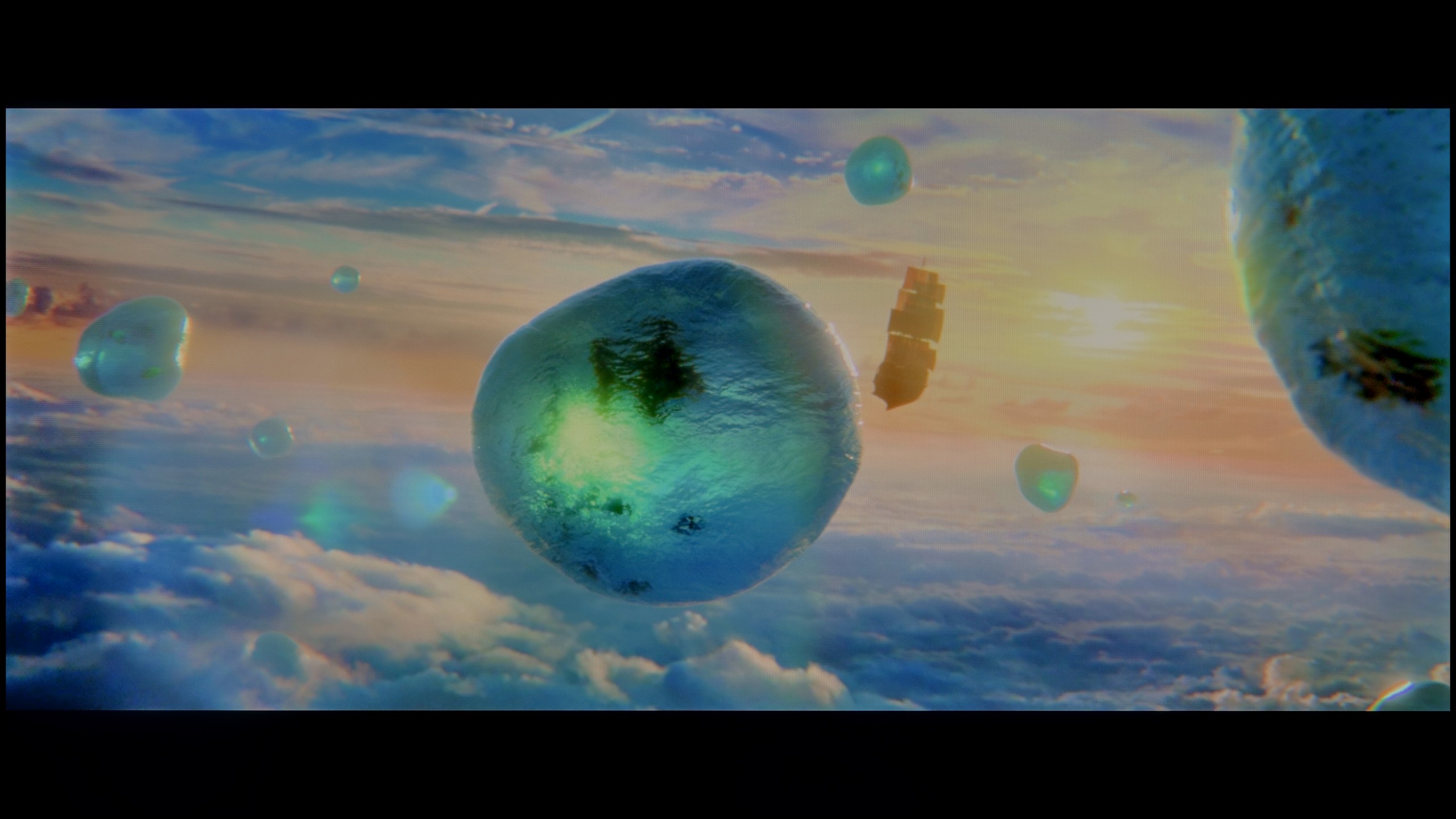
Scene from the movie “Billy Lynn” (about 1100 nits)

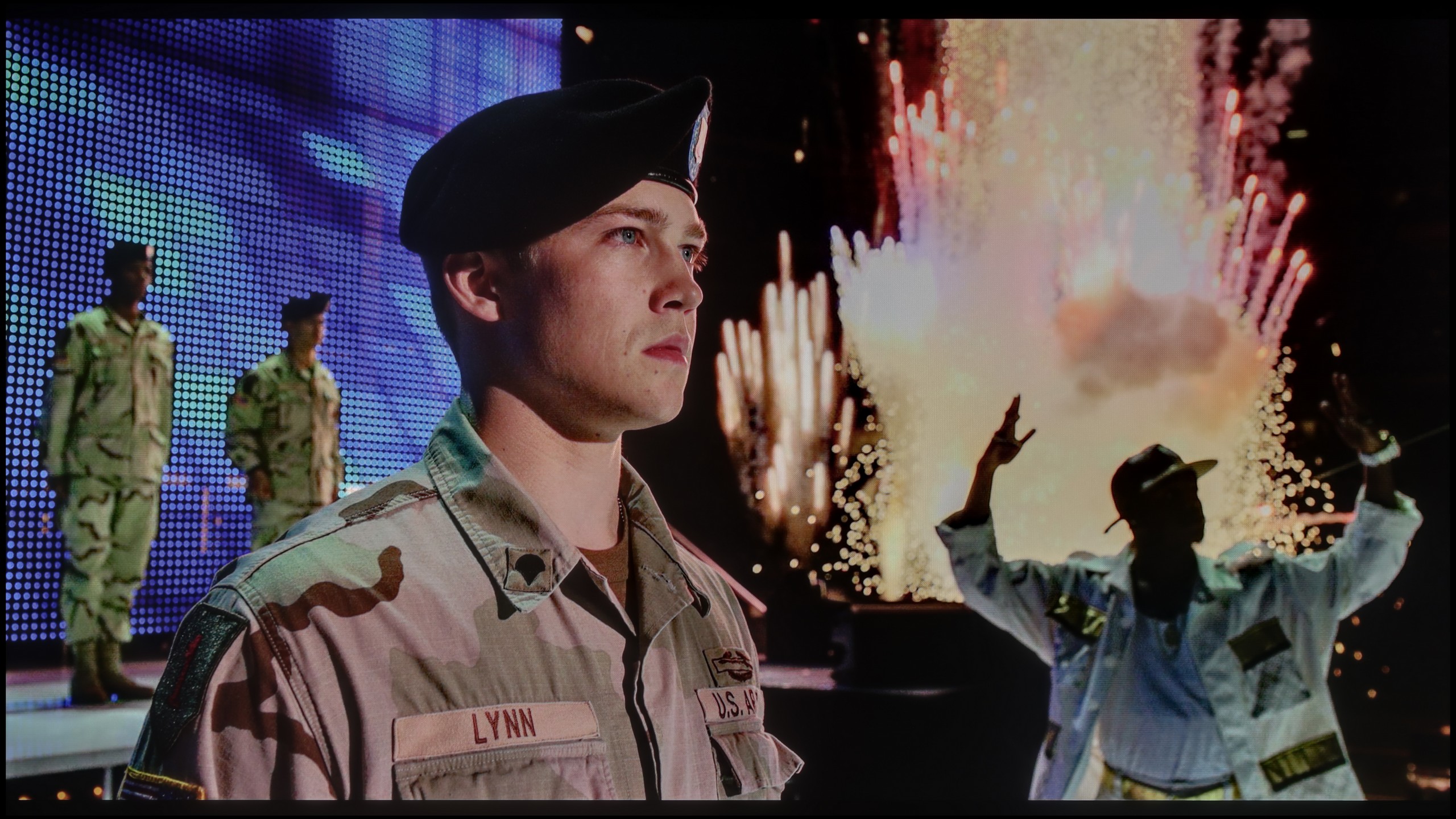
Static HDR10


Dynamic: Dolby Vision
Dynamic: Dolby Vision


HDR luminance chart:
Hisense U7Q
Luminancja HDR
Luminance of RGB colors
TCL P755
Luminancja HDR
Luminance of RGB colors
TCL P755 provides average HDR effect quality. The maximum brightness of the television is slightly below 300 nits. Such brightness limits the intensity of bright areas in HDR content. In practice, this means that bright elements may not be sufficiently pronounced, which affects the overall impression of contrast. However, the television offers a wide coverage of the DCI P3 colour gamut, reaching around 93%. As a result, colours are vibrant and saturated, significantly improving colour reproduction quality in HDR content. Despite the limited brightness, the wide colour range allows for richer and more realistic shades.
Since the algorithms responsible for blacks are performing quite well, we expected a similarly good effect regarding brightness and overall HDR quality. Unfortunately – here we have to disappoint you a bit.
The U7Q is a sufficiently bright television – under the best conditions, it can achieve around 800 nits, which indeed impresses on some scenes, especially in scenes like those from the film The Meg. Bright areas can shine, and the HDR effect is noticeable. The problem arises when there are very small, bright elements on a dark background – for example, in Sicario 2 or in the second scene from the film Life of Pi. In such moments, the dimming algorithms work too aggressively. Yes, the blacks look great then, but the brightest points can almost completely disappear, causing the HDR effect to vanish and the details to be barely visible. It's just the nature of this technology in this price segment.
As a consolation, it's worth mentioning that the U7Q is marketed as QLED (in practice, a PFS layer is used, which works very similarly), and it is indeed capable of displaying a wide colour palette – a DCI-P3 coverage of around 94% is a very good result for this class.
Factory color reproduction
6.2/10
6.3/10


Factory Mode
After calibration
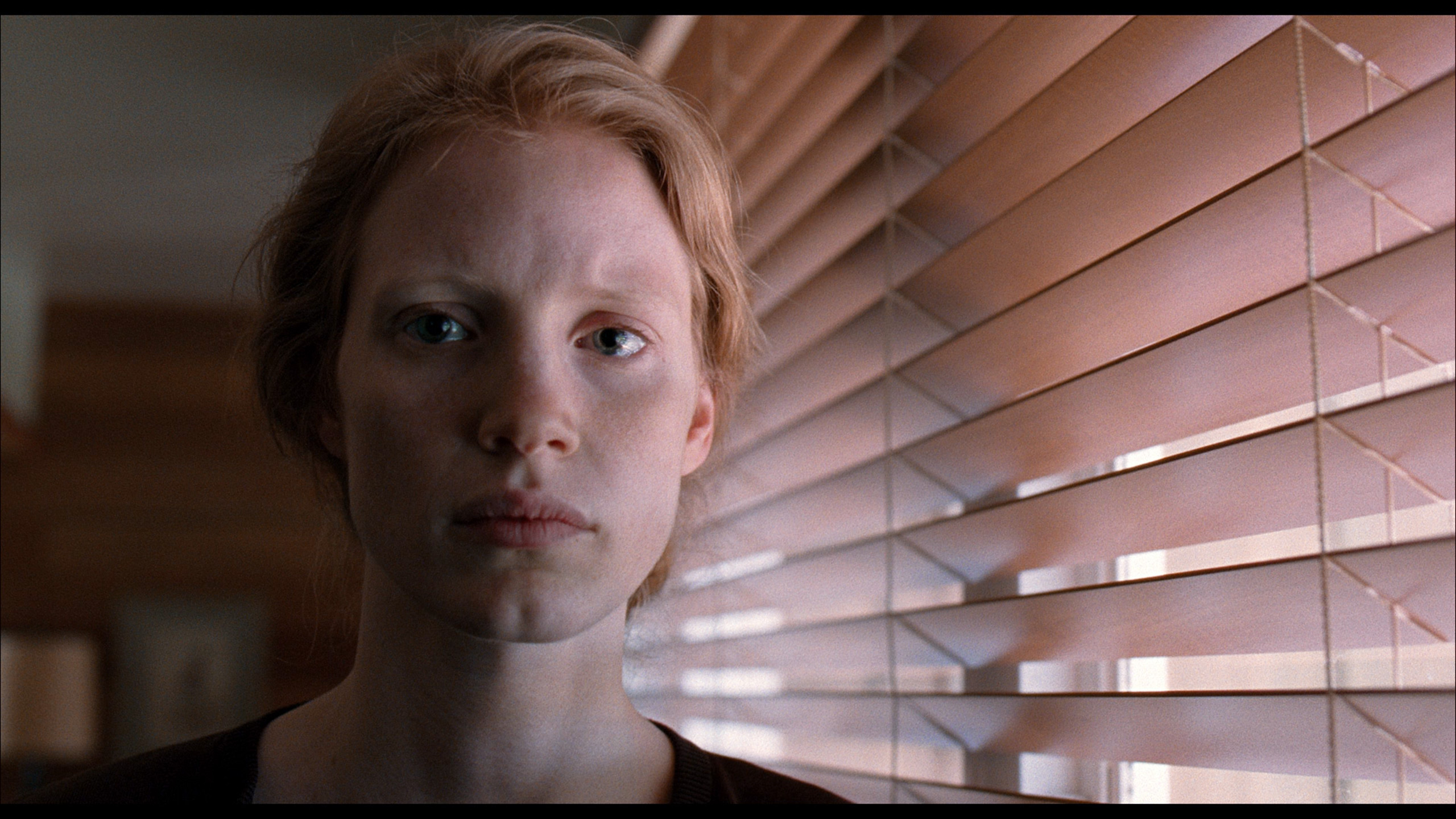
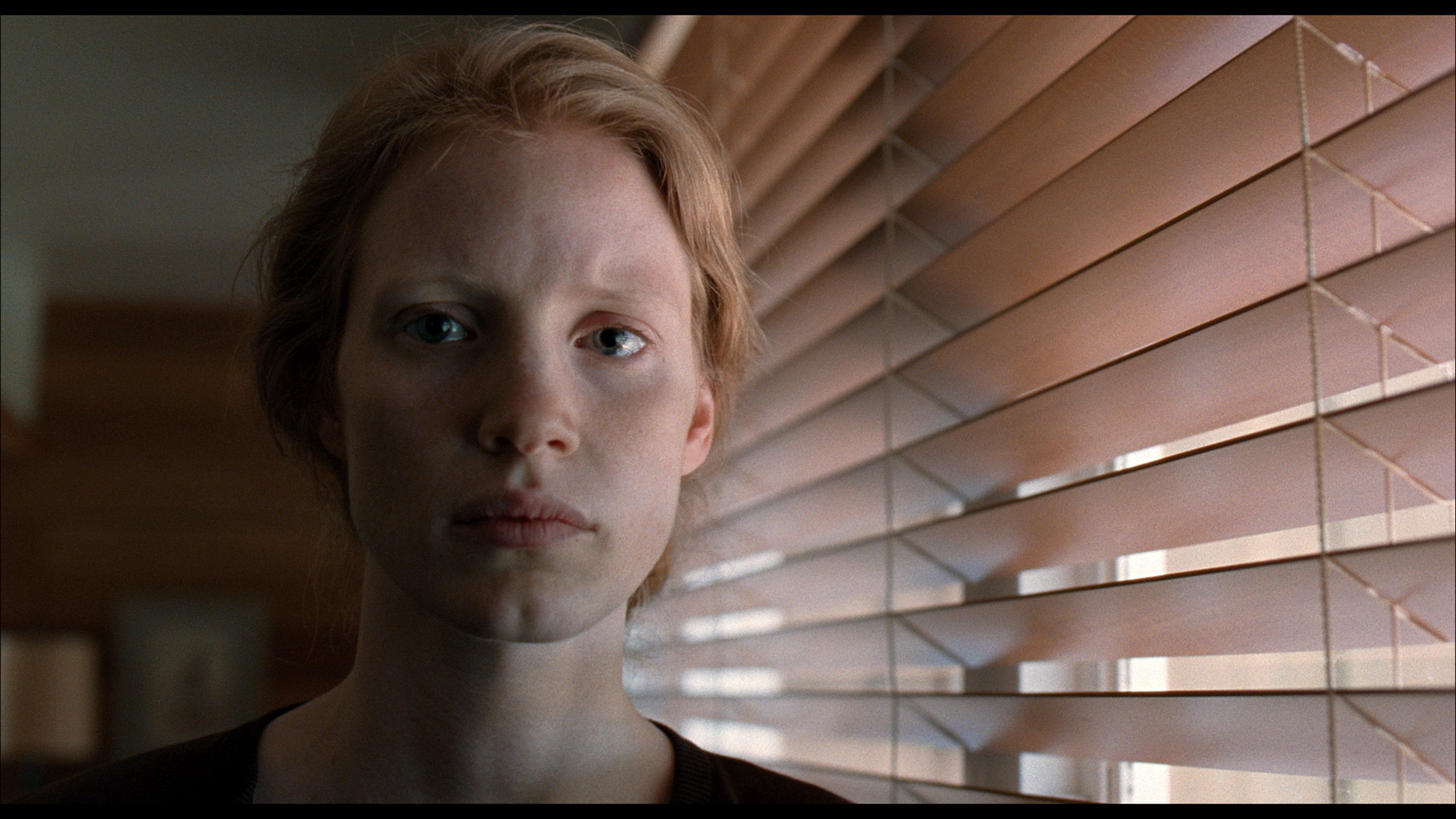
Factory Mode
After calibration
The colour reproduction in the P755 in "Movie" mode, although it is the best factory setting, leaves much to be desired. The biggest problem is the white balance, where the graph clearly shows a spike in red and a drop in green. This leads to a shift in colours towards red, making the colours on the screen less natural and potentially looking incorrect, especially in scenes with a white or neutral background. This is confirmed by the "Colour Checker" test, which reveals that the colours are indeed skewed towards red, affecting the realism of the image and reducing the perception of colour depth. In terms of contrast, the gamma chart analysis shows considerable fluctuations, particularly in dark areas of the image, where values drop below the optimal level of 2.4. This results in darker areas being displayed brighter than they should be. Additionally, the EOTF curve, responsible for brightness reproduction, is slightly above the reference curve. The graph shows a slight boost in brightness to around 50%, followed by only a minor decrease. This leads to excessive brightness enhancement in the mid-tones of the image and may result in loss of detail and distortion in brighter scenes.
We tested the U7Q in the best possible picture mode, which is Filmmaker Mode. This is the mode that is supposed to provide the most "filmic" and creator-intended experience – right out of the box. Unfortunately… even this professionally sounding name does not guarantee a perfect picture.
In our unit, the problem lay in the incorrectly set white balance. Both in HD and 4K content, the picture had too much blue and red, which caused the screen to take on a slightly rosy tint. It didn't look terrible, but it was noticeable – especially in bright scenes and white backgrounds. This alone could perhaps be forgiven, but the biggest problem is managing brightness in HDR content. The EOTF curve from measurements confirms what we saw earlier during scene tests: the television can overly darken the smallest bright elements, causing them to nearly disappear, or on the contrary – excessively brighten the brightest ones, which affects the naturalness of the picture.
Color reproduction after calibration
7.6/10
7.4/10

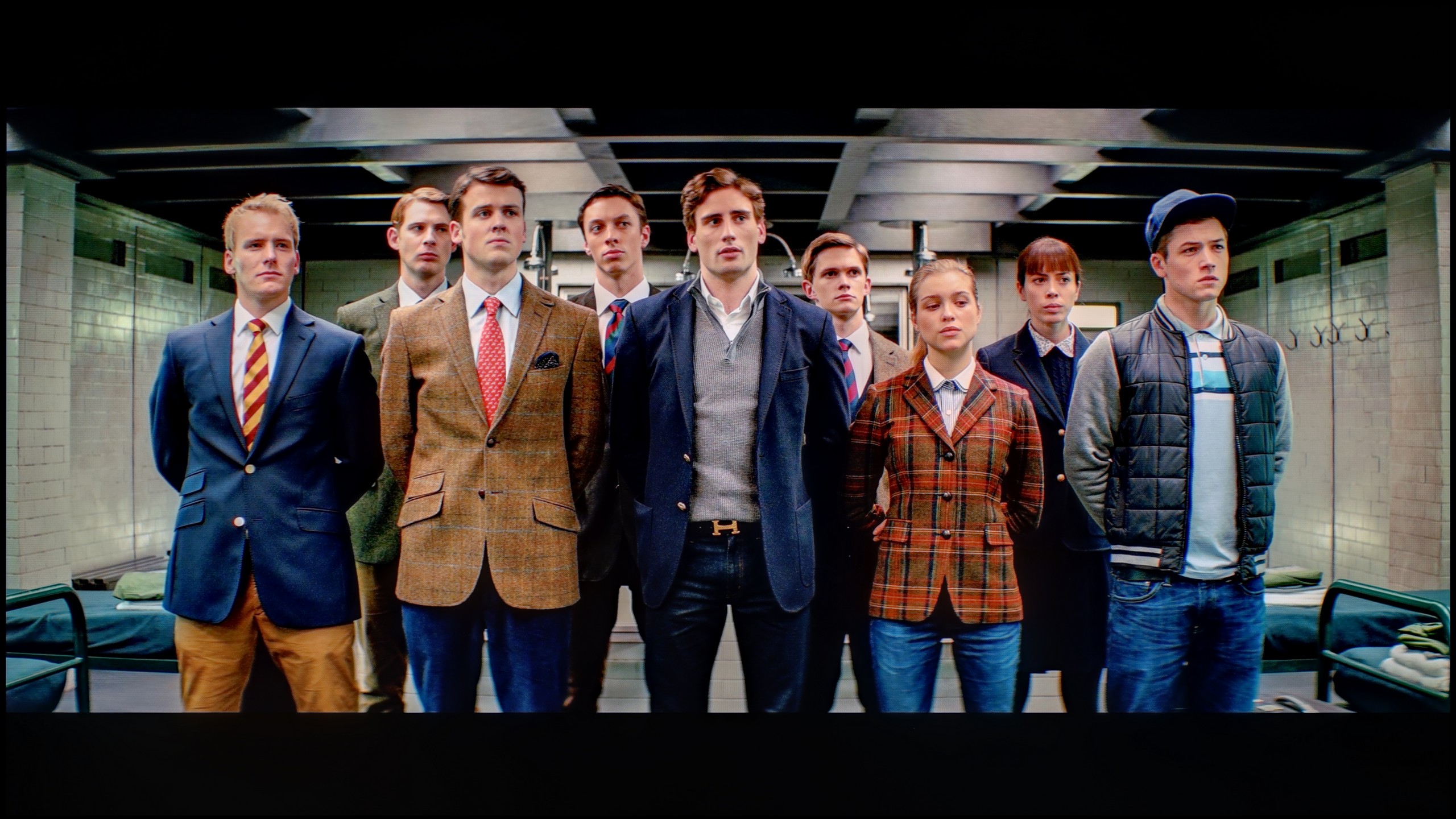

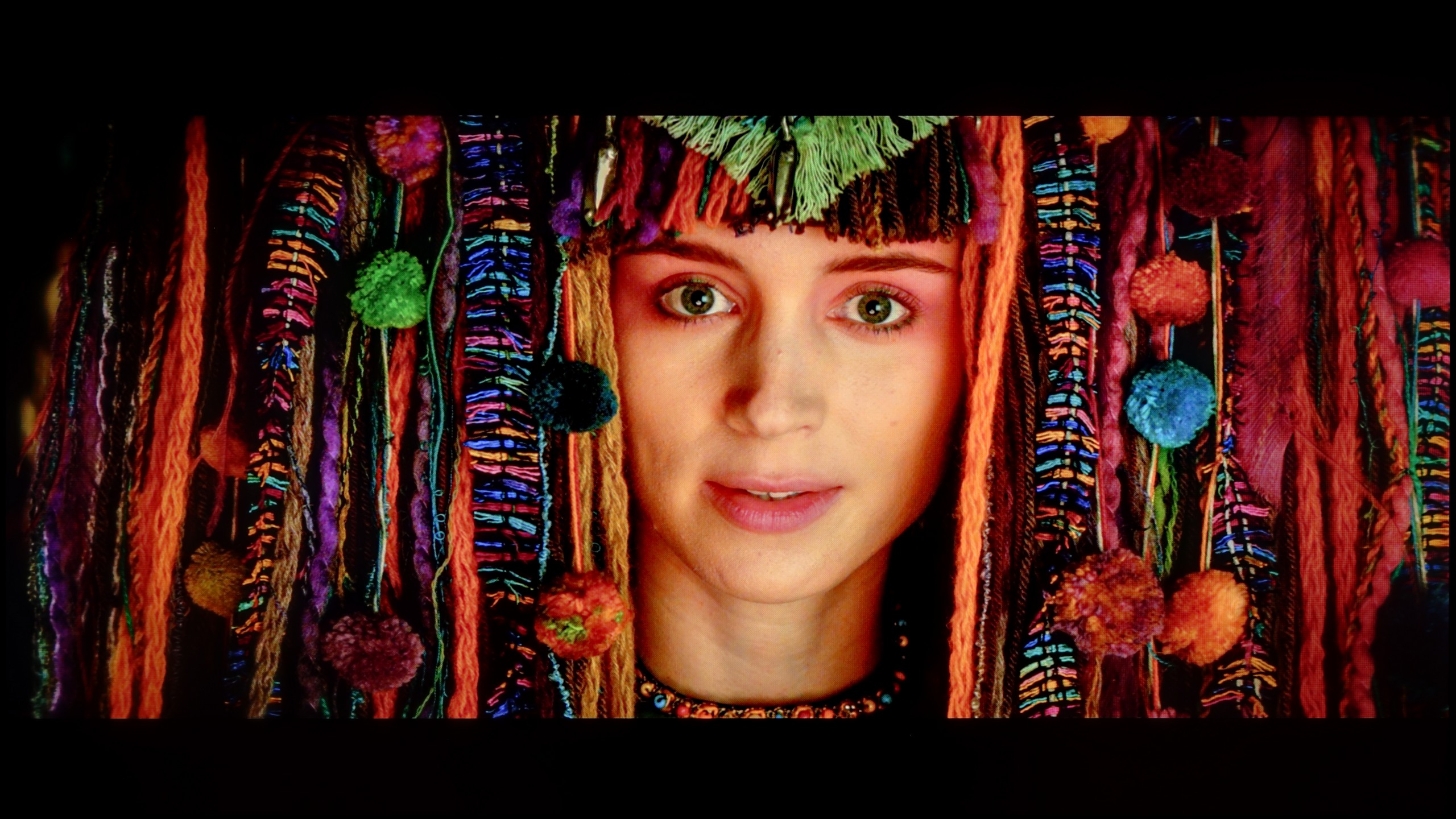
After calibration, the colour reproduction on the television improves significantly when it comes to SDR content. The colour curves are now close to the ideal value, and the gamma is more stable. Although the drop at the beginning of the graph to value is still present, the overall accuracy of colour reproduction is much better. The "Colour Checker" test shows that most colour samples have errors below level 2, indicating improved colour fidelity. A few deviations are present, but generally, the colours are now more realistic and consistent with reality.
Calibration also brings improvement in HDR content. The white balance has been improved, resulting in a more natural colour reproduction. The EOTF curve, although now closer to the reference curve, still shows a slight boost in brightness at the beginning of the graph. This leads to minor distortions in very bright scenes, but the overall tonal quality and detail have been enhanced. Dynamic tone mapping works more effectively, improving image quality in bright areas and retaining more detail.
Although the device's picture does not achieve complete perfection, calibration brings significant improvement. After adjusting the settings, the television presents itself much better, offering a more realistic and accurate colour reproduction in SDR and HDR content. While some shortcomings can still be noticed, calibration effectively eliminates many previous issues, ensuring better image quality and more natural colours.
Thanks to specialised tools, we managed to correct the colour quality in SDR content to nearly perfection. In materials with lower dynamic range, the delta E errors dropped below 0.5, which can be regarded as an almost reference result. The picture on television, YouTube, or classic Full HD looks really very good after calibration. Alright – but where did we not manage to improve the image so easily? Primarily, it concerns HDR quality content. Although we managed to somewhat 'tame' the white balance and eliminate pink tints in most scenes, unfortunately, we no longer had full control over brightness management. We set the local dimming settings according to the best observations – SDR: Medium, HDR: High – but the U7Q still did everything a bit its own way. There were still cases of excessive dimming or brightening of details that calibration simply could not eliminate. And although the overall reception of the content is significantly better, one must reckon that the U7Q will always have something to say at the end with an 'but'.
Smoothness of tonal transitions
7.5/10
9.9/10



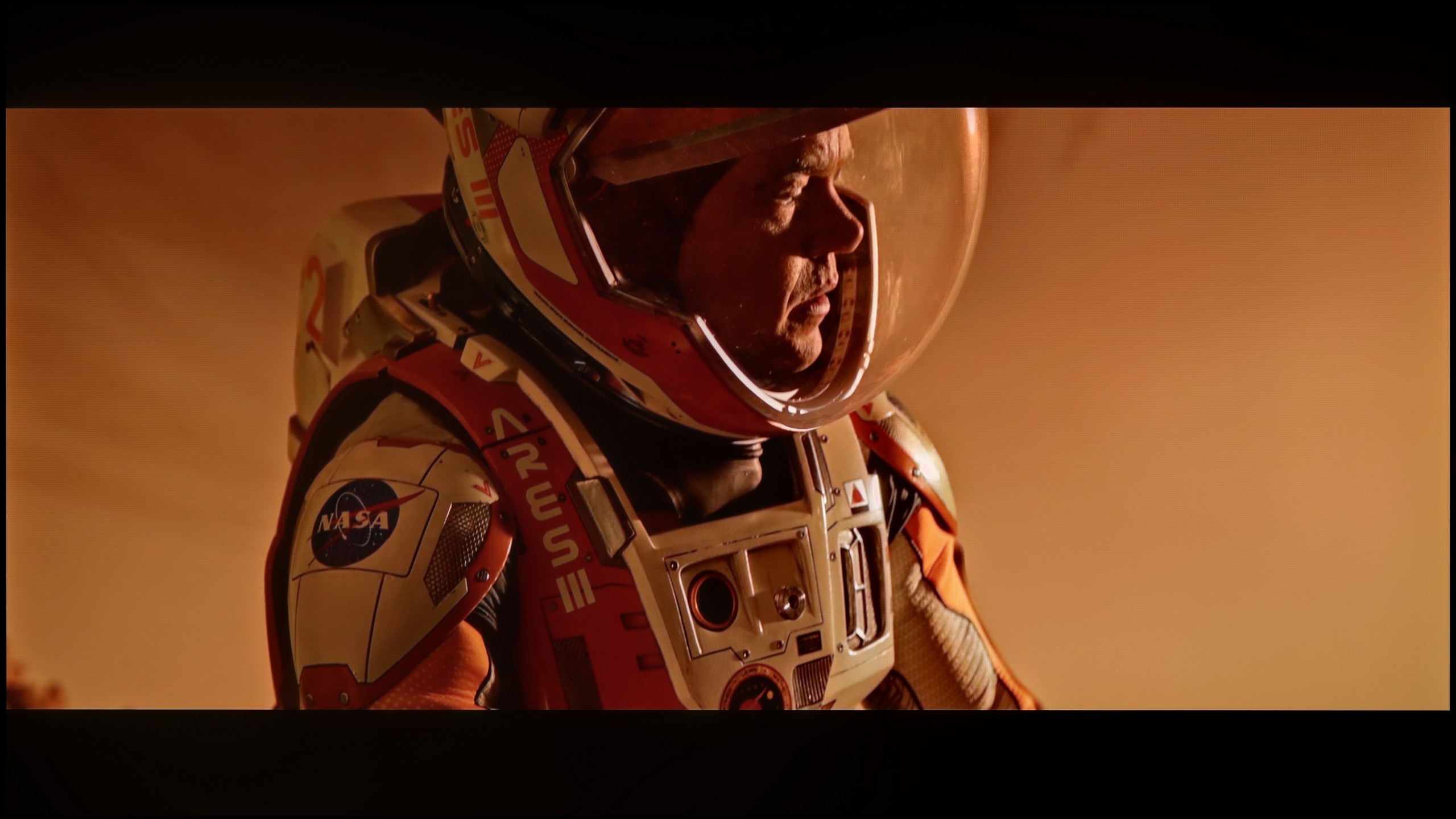

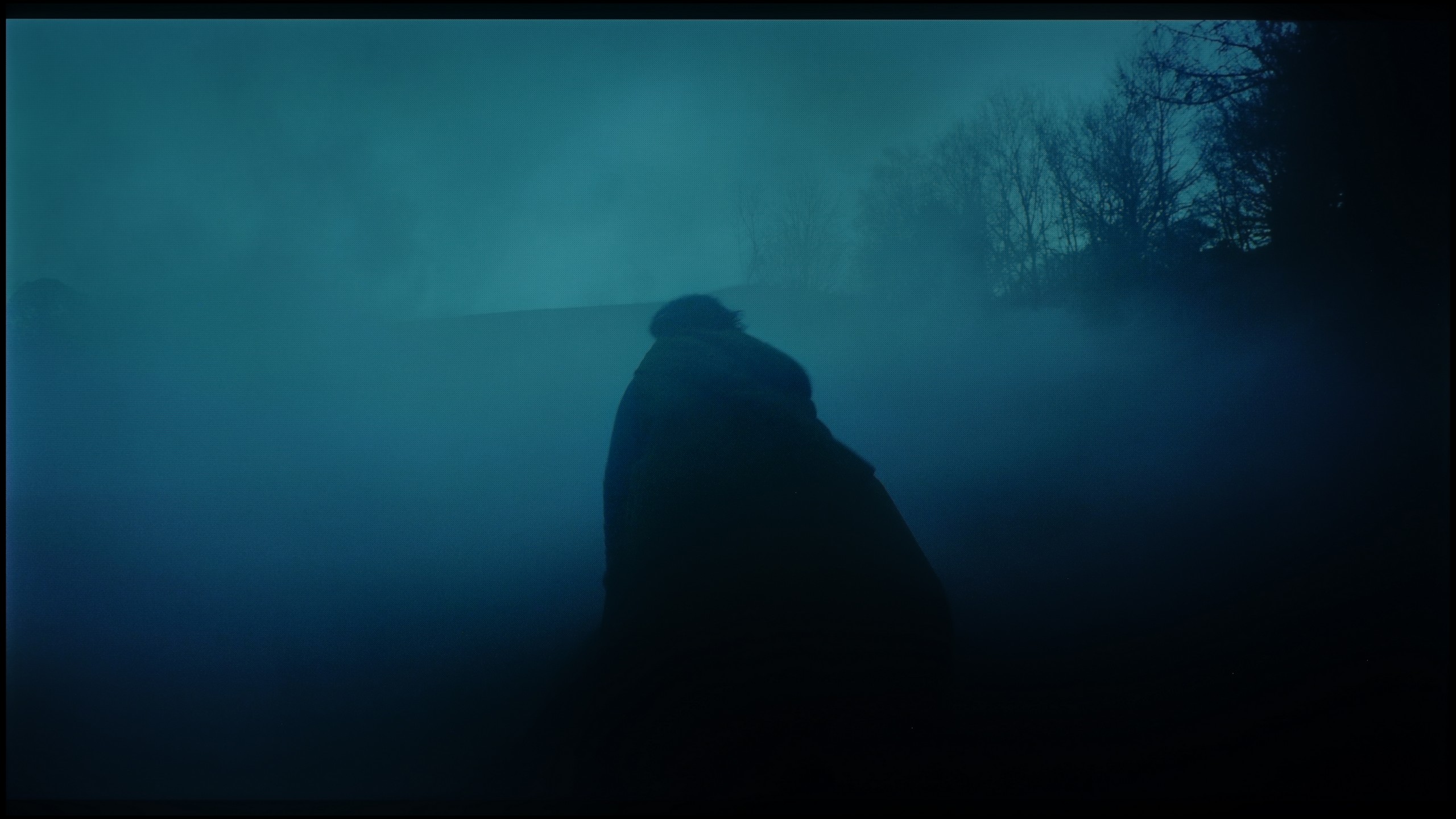






In the case of high-quality content, TCL P755 offers decent fluidity in tonal transitions. Although there are slight imperfections in colour blending, especially in more complex gradients, these are typical for televisions in this price range. During testing in filmic scenes, these issues were noticeable at certain moments, but in most cases, one really has to pay close attention to spot these flaws. For the average user, they should not pose a significant problem in everyday use.
The U7Q performs remarkably well when it comes to tonal transitions – we can confidently say that it is at an almost reference level, which is why this television receives one of the highest possible ratings in this category from us. Colour blending is smooth, clean, and without visible bands. In the majority of scenes, everything looks simply perfect, and any minor imperfections may only appear in very specific shots – although we hardly noticed any during our tests.
Image scaling and smoothness of tonal transitions
5.5/10
6/10
Smooth transition function

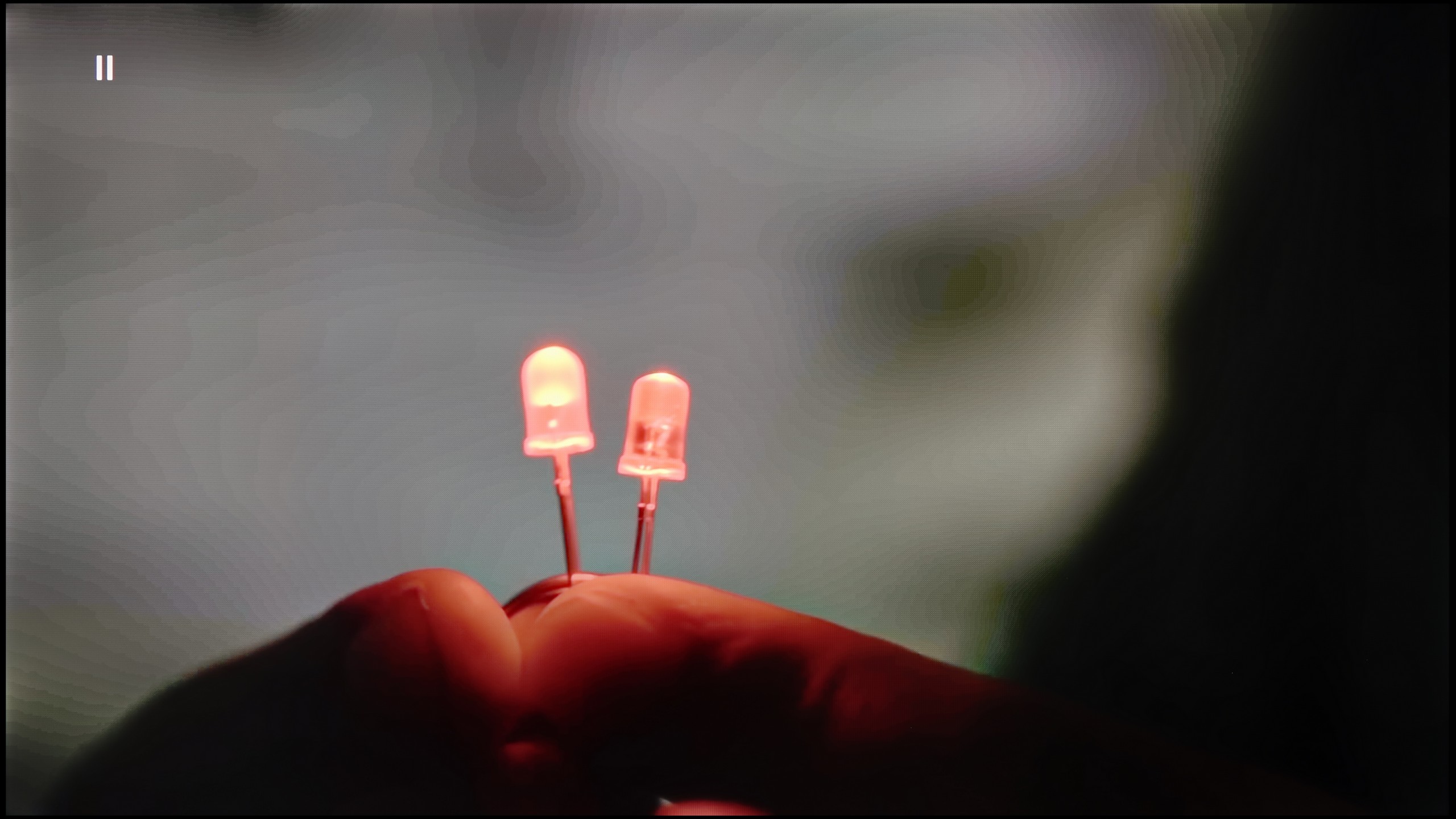
Image without overscan on the SD signal


The "Gradual Smoothing" function works quite well, effectively eliminating visible boundaries between different shades of the same colour. Thanks to it, tonal transitions are smoother. Unfortunately, this function is not available in HDR mode, which may affect the quality of tonal gradations in higher dynamic range materials.
When it comes to image scaling, the television does not perform at its best. There are noticeable edge cuts, particularly evident on the figure of the model and the branches of trees. The blurring of details in these areas affects the overall sharpness of the image. This may be noticeable when watching content in a lower resolution. Moreover, SD quality images are displayed with slight cropping at the top as well as the bottom.
There are situations where we would like to smooth out tonal transitions a bit, especially in older materials – those with limited source quality. The U7Q is equipped with a feature called "Smooth and Gradient Image," but unfortunately... it works very poorly. In the "Low" option, the effects are practically unnoticeable, and other settings smooth details but do not improve tonal transitions. The only positive aspect is that the feature does not interfere with film grain, so it does not ruin the natural structure of the image.
Fortunately, upscaling content performs quite well. The image is not excessively sharpened, and there is no artificial clarity – and although it is known that this is not the level of high-end televisions, the U7Q handles displaying really old content in a completely acceptable manner without any issues.
Blur and motion smoothness
4.3/10
7.5/10


Blur (native resolution, maximum refresh rate):




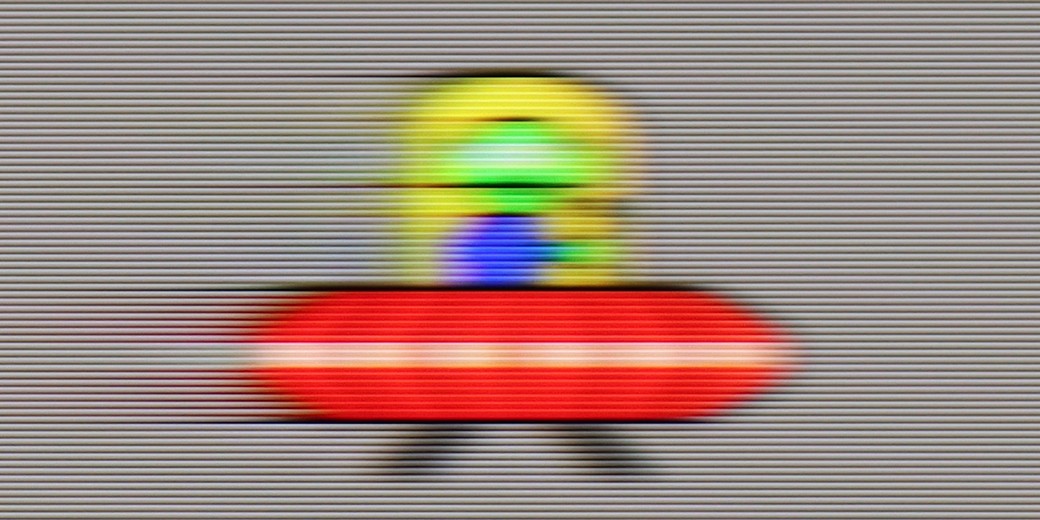
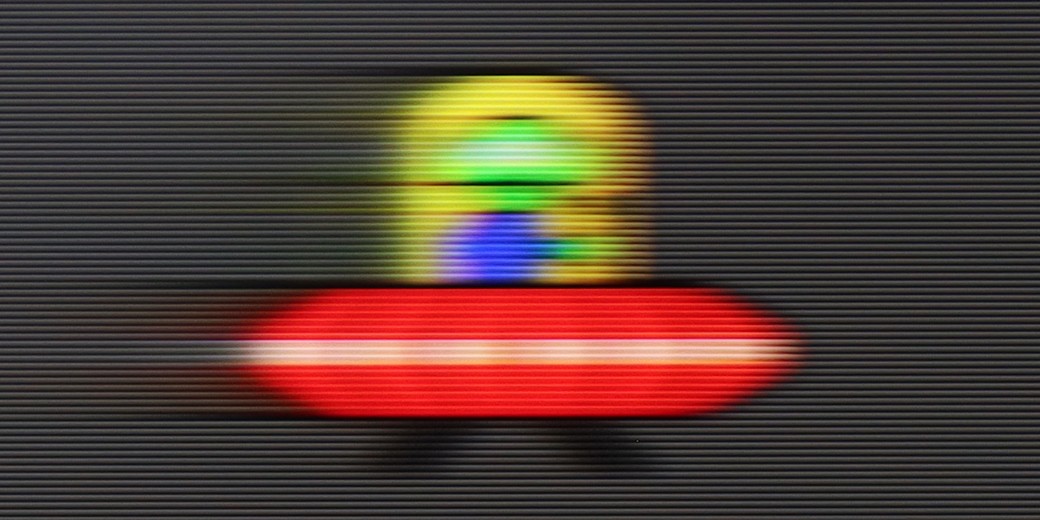
Blur (BFI function enabled):



Smużenie ():
Smużenie (1080p 240Hz):
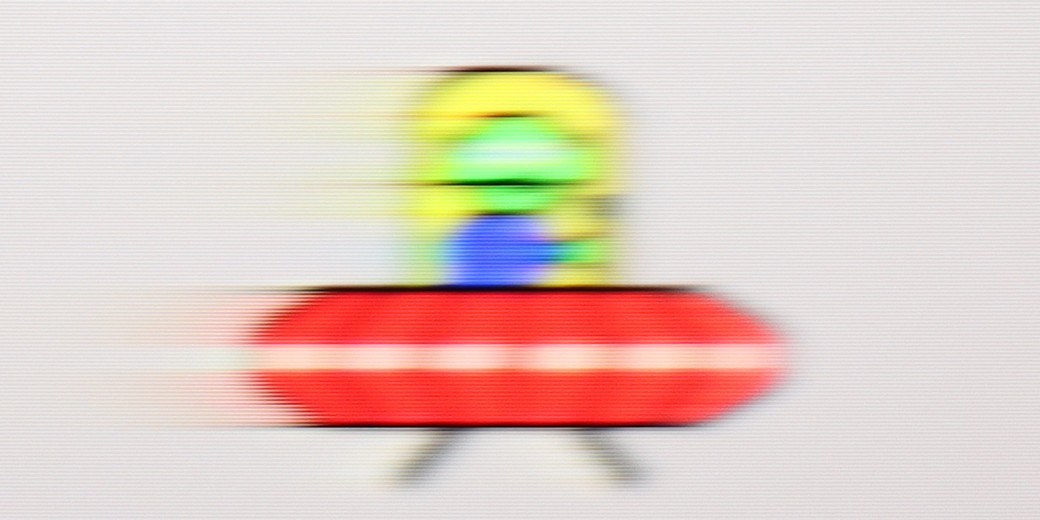
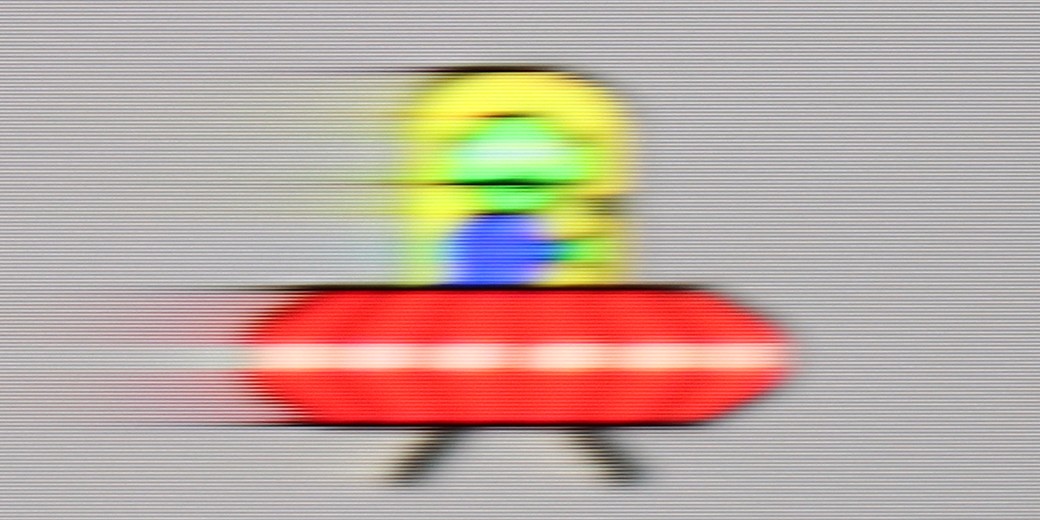
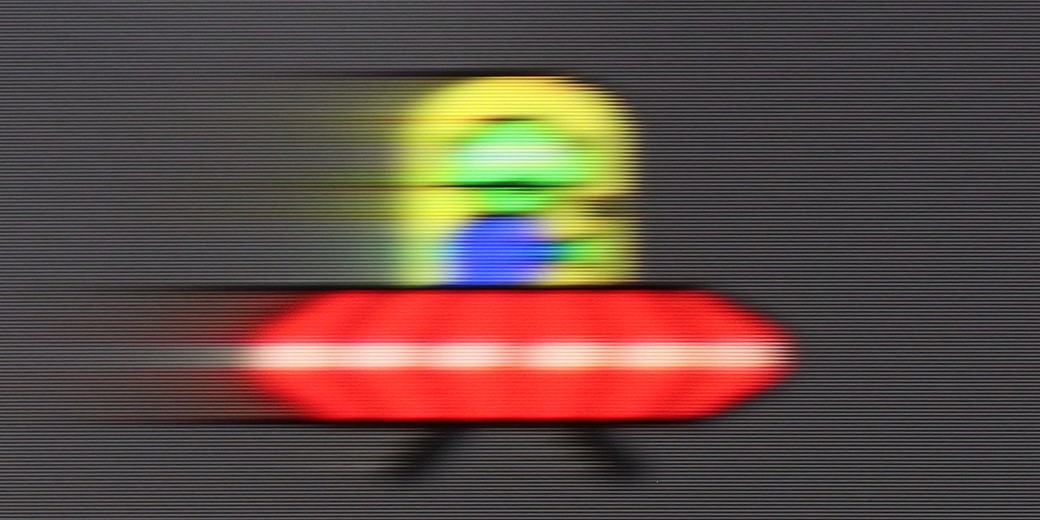
The television offers decent, although not perfect, results in terms of motion fluidity. For films, the television features a “Flicker Reduction” function that allows for motion fluidity adjustment on a scale from 1 to 10. With this option, we can customise the appearance of the image to a cinematic or more theatrical preference (with a slower or faster pace).
U7Q is indeed a very fast television, just like its more powerful version "PRO". At a resolution of 4K, it supports up to 144 Hz refresh rate, and if someone wants even more – in Full HD, you can achieve up to 240 Hz! This will mainly benefit PC gamers, but it is worth appreciating – it is a rarely seen feature in this price segment. Right from the start, it is clear that the U7Q has been designed with dynamic content in mind, such as games or sport. In films, we are not left "out in the cold" either – the U7Q offers an "Ultra Motion Smoothness" feature, where using two sliders you can adjust whether you prefer a smoother, theatrical image or something closer to a cinematic style with a visible film frame. It is good that, as with most manufacturers, we have a choice here as well and can adjust it to our own preferences.
Console compatibility and gaming features
5.3/10
8.5/10
- ALLM
- VRR
- VRR range48 - 60Hz48 - 240Hz
- Dolby Vision Game Mode
- Correct implementation of HGIG
- 1080p@120Hz
- 1440p@120Hz
- 4K@120Hz
- Game bar



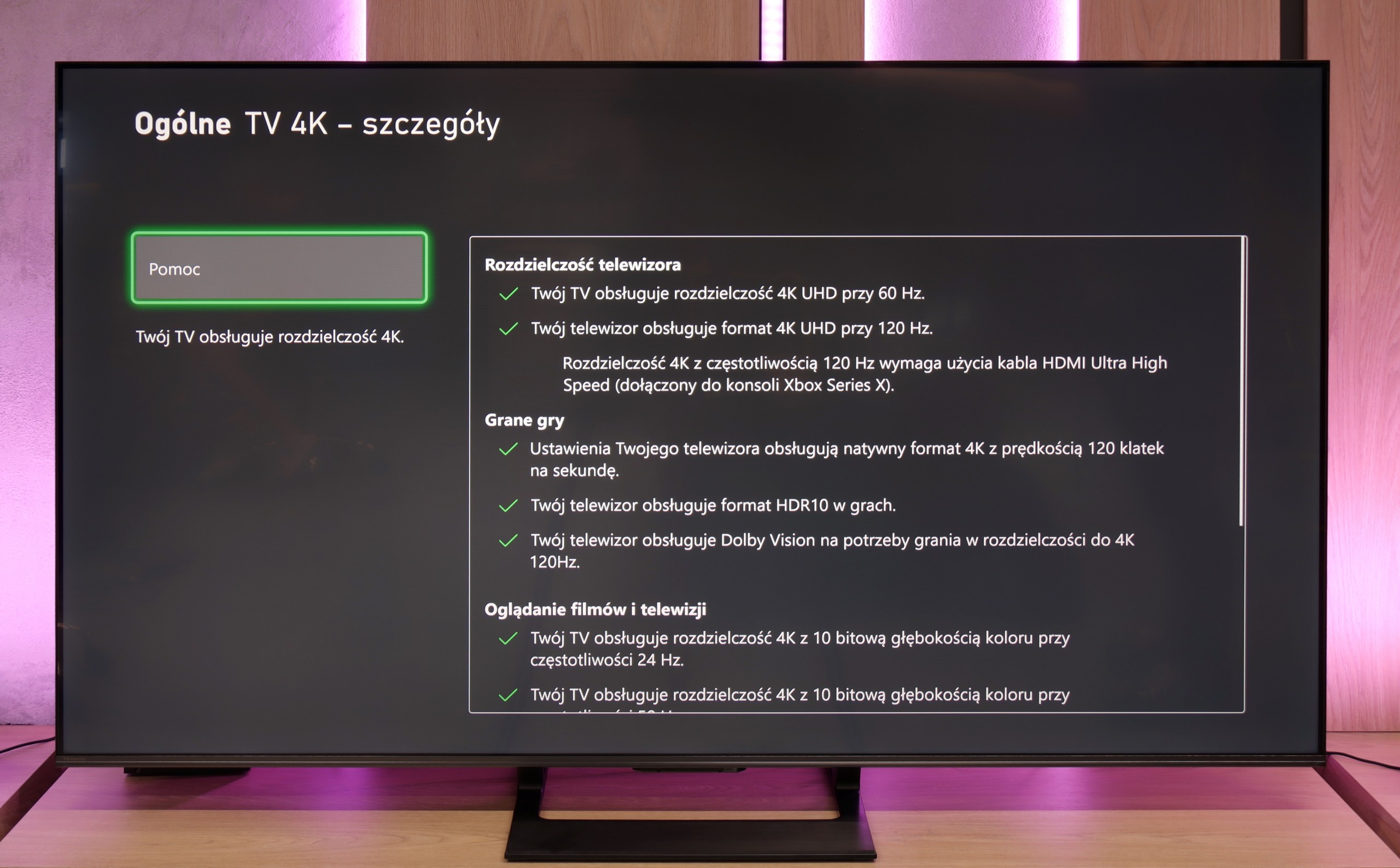



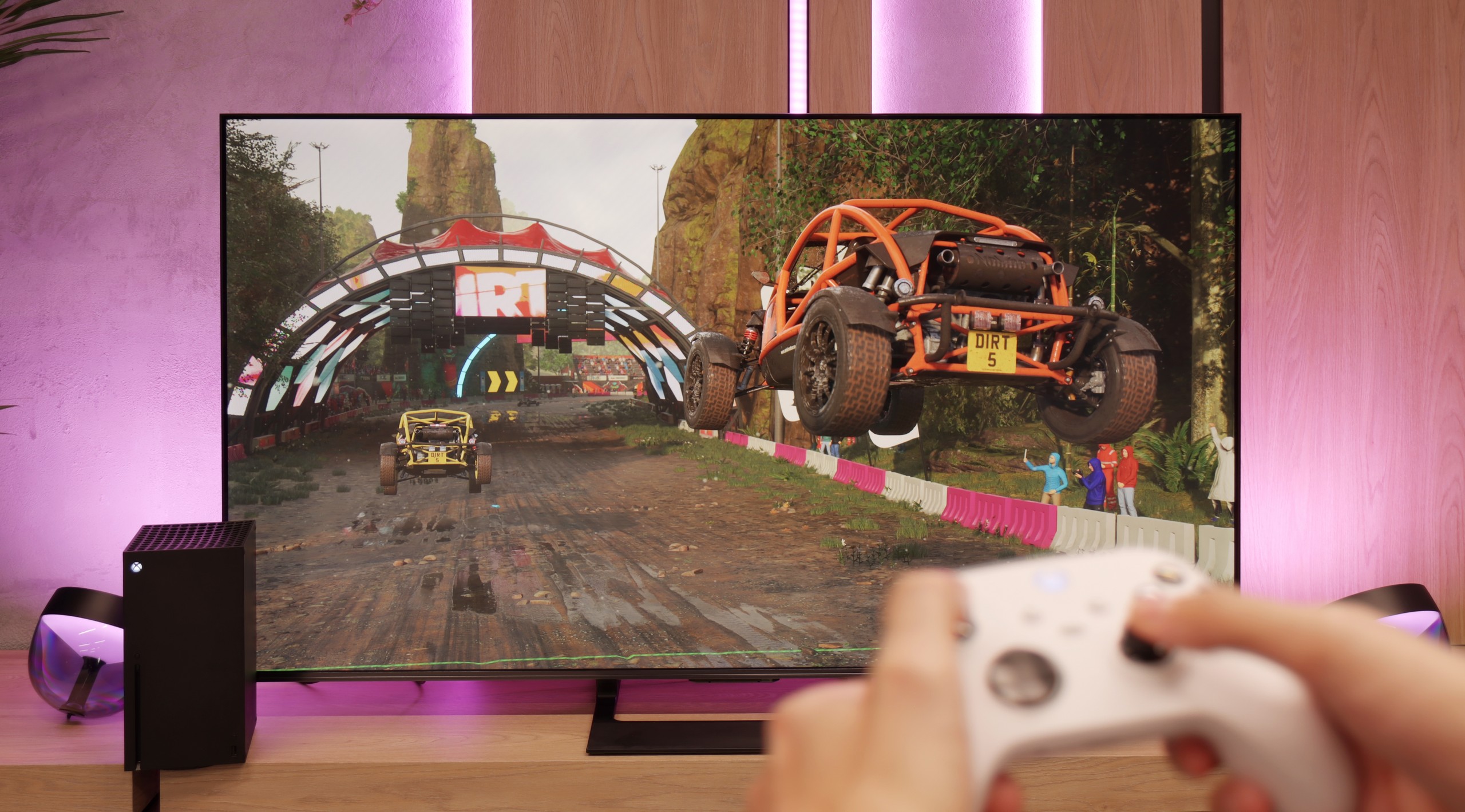
The device offers a range of features useful for gamers, such as ALLM (Auto Low Latency Mode), VRR (Variable Refresh Rate), Dolby Vision for gamers, and Game Bar. ALLM automatically switches the television to low latency mode, significantly improving response to commands from the controller and minimising input lag. VRR synchronises the screen refresh rate with the number of frames generated by the console, eliminating screen tearing and providing smoother gameplay. Dolby Vision for gamers enhances picture quality, offering better colour and contrast reproduction in games that support this format. The Game Bar feature allows quick access to game settings and monitoring of key parameters such as reaction time.
However, the television has certain limitations. The 60 Hz panel prevents the display of higher refresh rate signals at various resolutions, which may affect the smoothness of the image in dynamic games. Additionally, the lack of support for G-Sync technology for PC may impact gameplay quality on a computer. It is also worth noting that the HGiG mode, which aims to improve picture quality in HDR games, does not function correctly in this model, negatively affecting the visual experience in HDR-supported games.
The Hisense U7Q is a television designed with gamers in mind – and this is immediately evident from its gaming capabilities. It has practically everything you could wish for: variable refresh rate (VRR) – check, automatic game mode (ALLM) – check, and on top of that, high refresh rates of up to 240 Hz in Full HD and support for various resolutions, not just 4K. This is truly a great set of features that makes the U7Q perform well both in fast-paced first-person shooters on consoles and in more demanding titles on PC. Of course – as with most Hisense models – there is a lack of proper implementation of the HGiG feature. It's a shame because HGiG allows console brightness to be matched to a specific television, which in practice makes displaying HDR games according to the creators' intent much easier. Without this, you simply have to reckon with certain limitations in the final HDR image in games.
Input lag
10/10
9.7/10
SDR
HDR
Dolby Vision
P755 offers exceptionally low input lag, which is a significant advantage for gamers. In every mode, whether SDR, HDR, or Dolby Vision, the television achieves impressive performance. In every resolution, the input lag is only 11 ms, well done! Even in Dolby mode, the television maintains the same low level of latency. Thanks to these achievements, the television provides remarkable responsiveness and excellent gaming experiences, with no noticeable delays.
The input lag on the U7Q is really impressive. With 120 Hz content, we measured around 9 ms, and with 60 Hz – around 17 ms. These are exceptional results that make the television excellent for even dynamic games requiring quick reactions. It's hard to criticise anything here. Of course, as is often the case, the Dolby Vision mode in games seems to be a bit slower compared to classic SDR or HDR. This will be particularly noticeable for users of Xbox Series X/S consoles, which are the only ones supporting Dolby Vision Gaming. Fortunately, the input lag remains below 30 ms, so in practice, this is still an acceptable level even for more demanding gamers.
Compatibility with PC
2.5/10
8.6/10

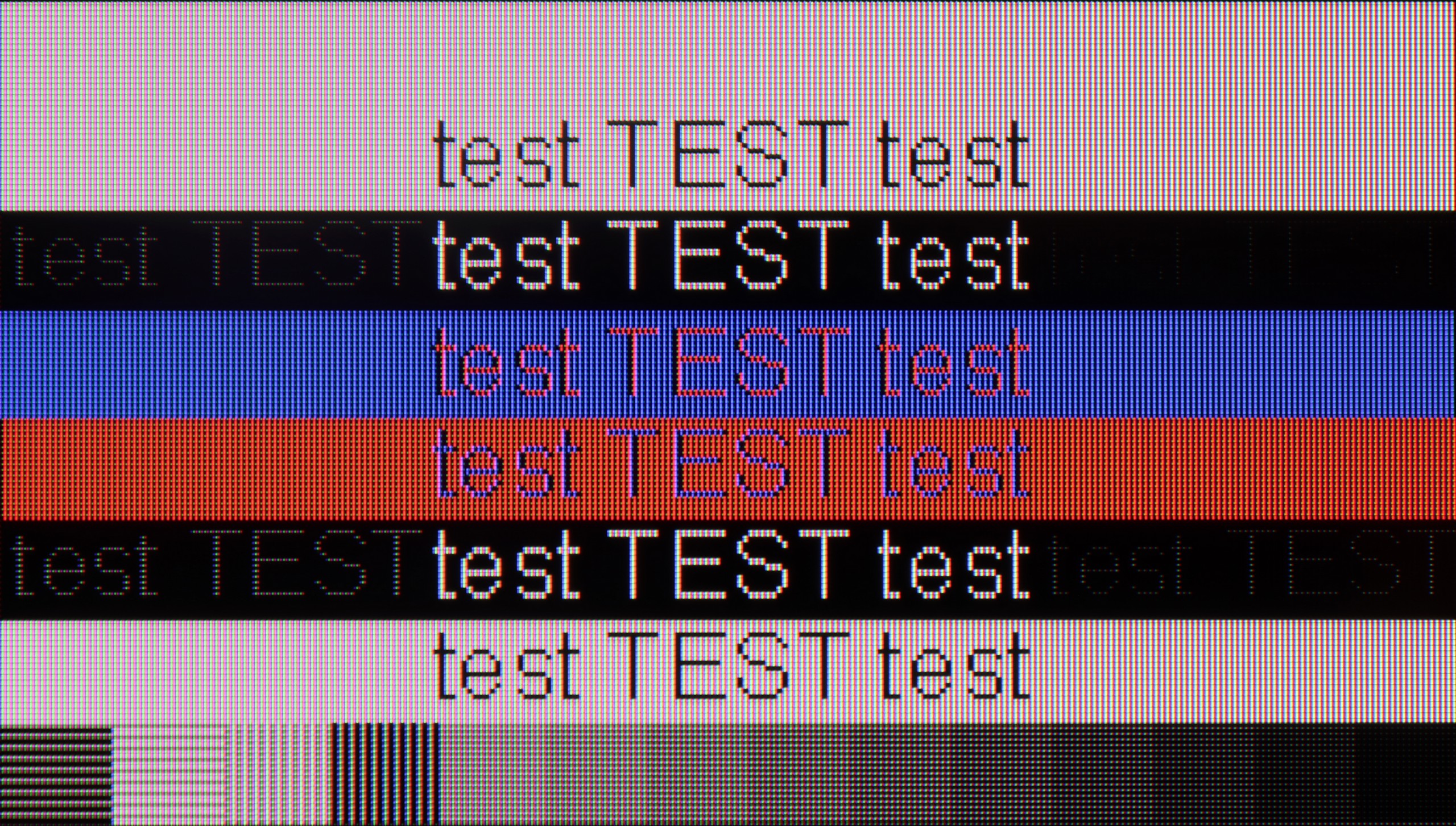
When connecting the TCL P755 to a computer, the first thing you may notice is the support for chroma 4:4:4, which ensures correct colour reproduction in details, especially when working with text and graphics. Unfortunately, despite this support, the readability of fonts leaves much to be desired, particularly with dark text and shapes on a dark background. This issue arises from the limited resolution in darker shades, where the applied dithering makes the pixels resemble those known from Full HD. This is especially visible with small fonts, making comfortable office work on a large screen difficult. However, a positive aspect is the very low input lag of 12 ms, which means that the television performs well for occasional gaming on a computer, particularly in dynamic games. Ultimately, while the TCL P755 may be a decent choice for PC gaming, it may be disappointing for users expecting high text readability.
The U7Q communicates excellently with the computer. For gamers, this is great news – we have high refresh rates, low input lag, and G-SYNC support, making gameplay from a PC pure enjoyment. But the U7Q also performs well in everyday tasks. If someone uses the computer for word processing, browsing the internet, or office work – there’s nothing to complain about. The TV correctly handles chroma 4:4:4, so fonts look sharp and clear, without blurriness or odd contours. Both small and capital letters are simply readable – just as it should be.
Viewing angles
3.2/10
3/10
P755, equipped with a VA panel, offers average viewing angles. In practice, this means that the brightness of the image significantly decreases when we view the screen at an angle. VA panels, although they provide better contrast and deeper blacks compared to IPS panels, have poorer properties in terms of viewing angles. IPS panels, known for their wider viewing angles, offer a more stable image from different angles, but usually at the cost of slightly lower contrast and black depth. Although the VA panel contributes to better contrast, the drop in brightness at an angle is noticeable and can affect viewing comfort in larger groups or from different positions in the room.
The viewing angles on the U7Q are rather poor – this is simply characteristic of VA panel qualities. Directly in front, everything looks very good: blacks are deep, colours are saturated, and contrast is high. However, just moving slightly to the side causes the picture to start losing quality – colours become washed out, and blacks begin to resemble dark grey. Compared to televisions with IPS panels, the U7Q performs worse, although on the other hand, it makes up for it with better contrast and deeper blacks.
TV efficiency during daytime
3.8/10
6.2/10

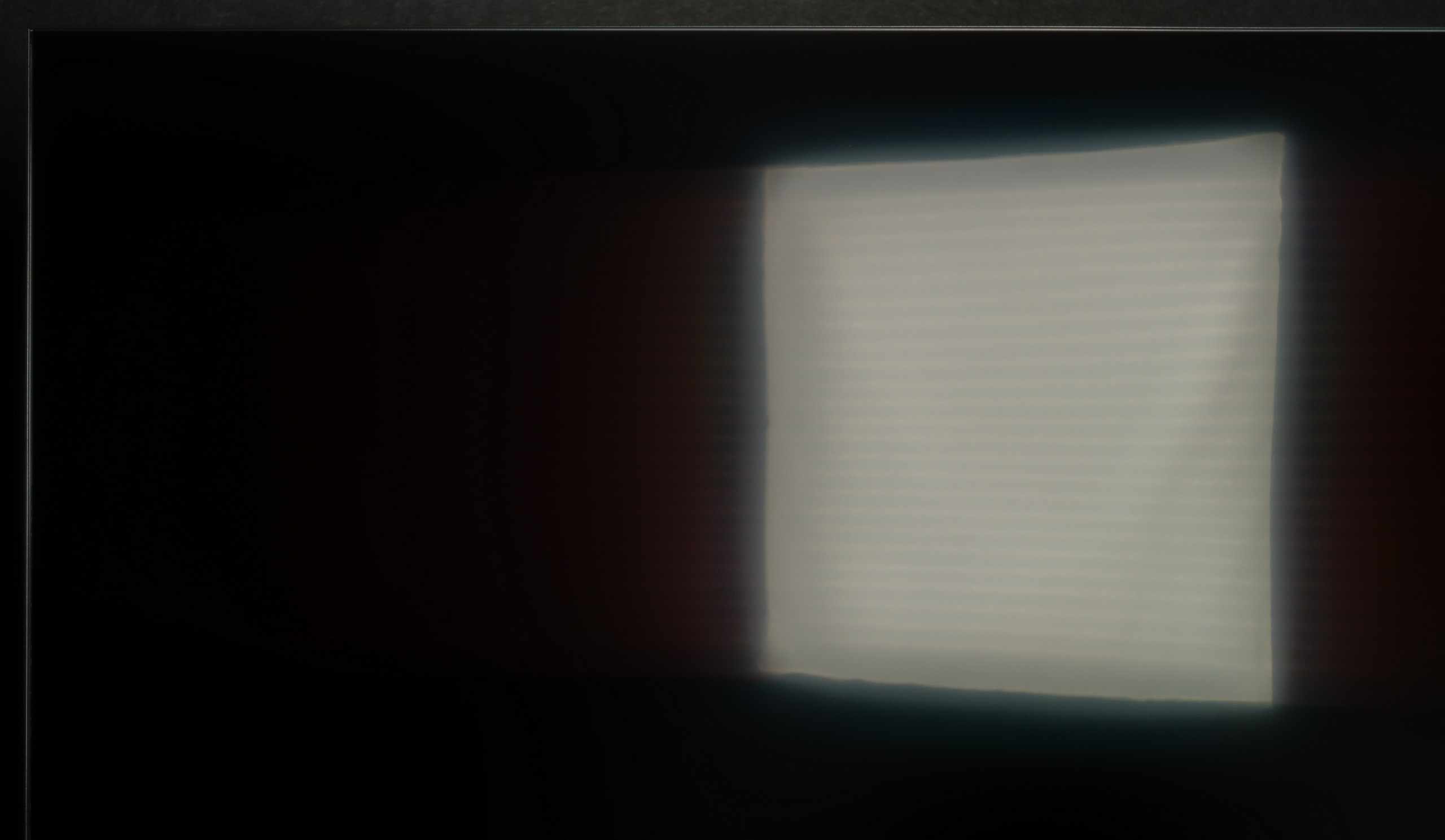

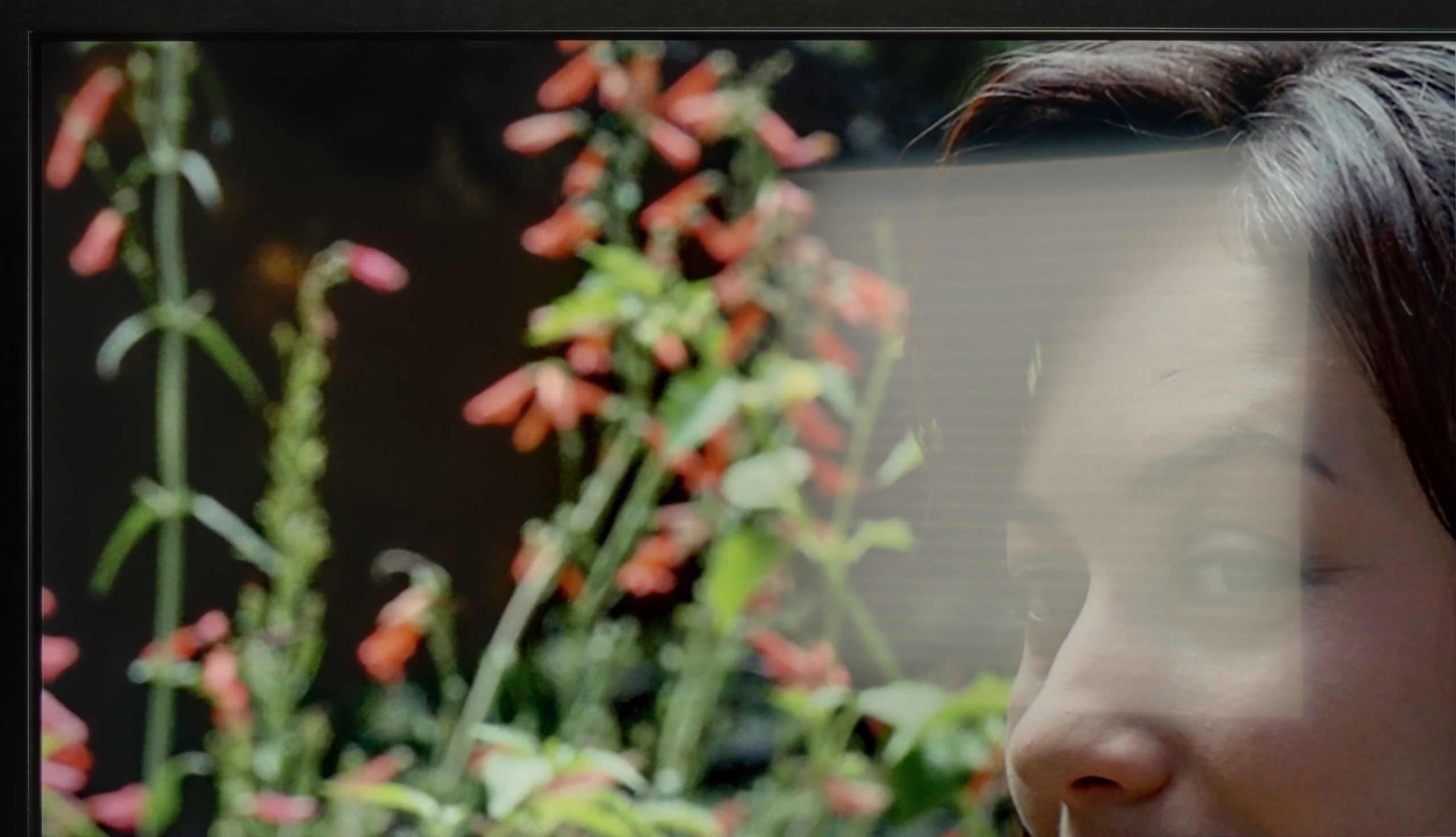
Matrix brightness
Average luminance SDR
Hisense U7Q: 519 cd/m2
TCL P755: 290 cd/m2
The TV, equipped with a satin finish, performs well in moderately lit daytime conditions. Its brightness in SDR mode is around 290 nits, which is an average value. Unfortunately, the television has poor reflection handling, meaning that reflections of light can be noticeable, especially in bright surroundings. Nevertheless, the television offers good black levels during the day, due to the use of a VA panel, which handles contrast better compared to IPS panels. In practice, this means that despite issues with reflections, the television can deliver a satisfying picture in daytime conditions, maintaining a decent level of black and contrast.
The U7Q performs quite well in a sunlit room. The brightness in SDR mode averages around 520 nits, which practically means that even on a sunny day, it is easy to comfortably watch television – without the feeling that everything is drowned in reflections. Additionally, thanks to the satin coating on the panel, the television does a good job of suppressing reflections.
Details about the matrix
Subpixel Structure:

Panel uniformity:

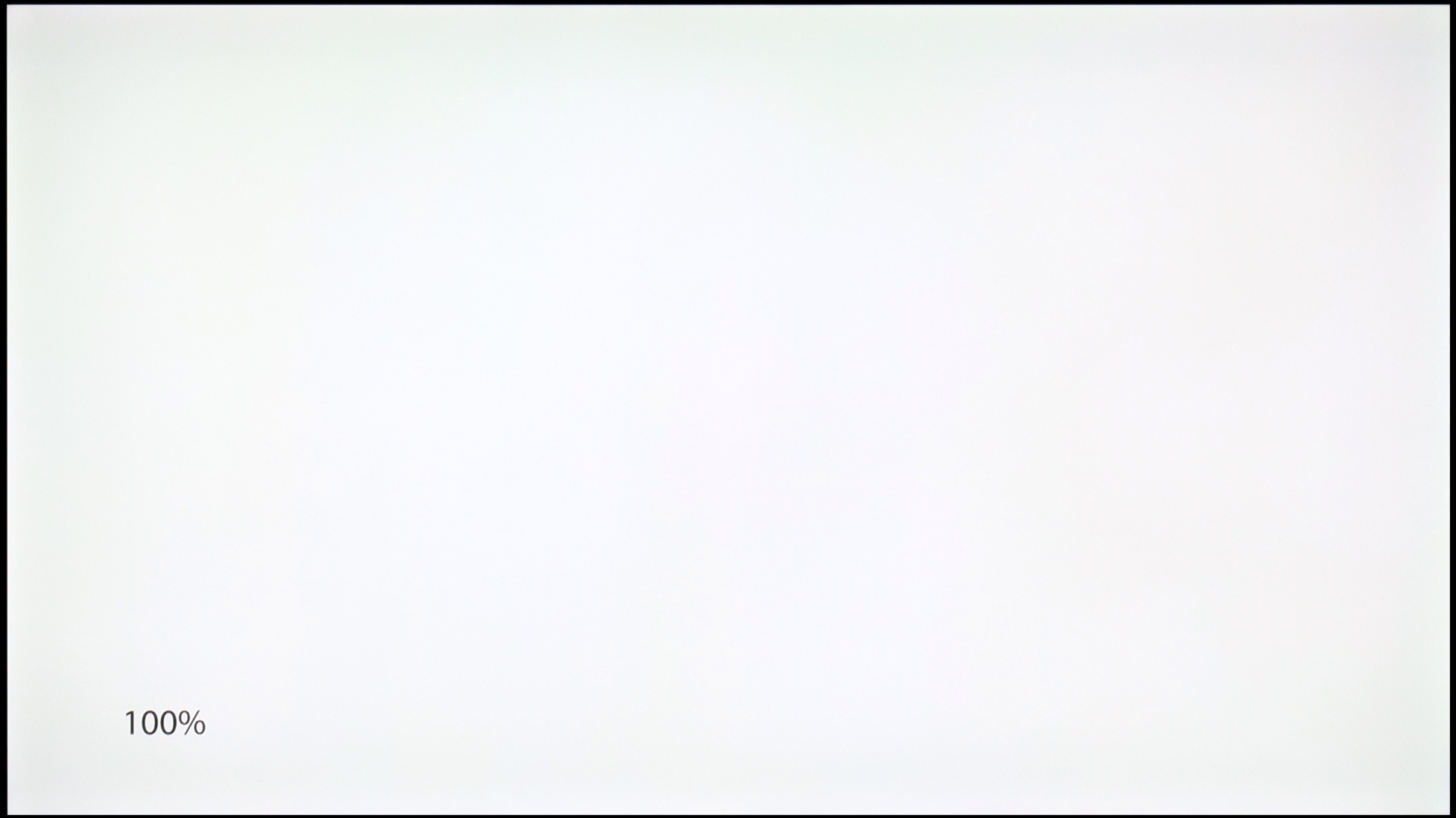
TCL P755
Hisense U7Q
TV features
7.7/10
8.9/10
- HDMI inputs3 x HDMI 2.0, 0 x HDMI 2.12 x HDMI 2.0, 2 x HDMI 2.1 48Gbps
- Other inputsRCA (Chinch)RCA (Chinch)
- OutputsToslink (Optical audio), eARC (HDMI), ARC (HDMI)Toslink (Optical audio), eARC (HDMI), ARC (HDMI), Mini-Jack (Headphones)
- Network InterfacesWi-Fi 2.4GHz, Wi-Fi 5GHz, Ethernet (LAN) 100MbpsWi-Fi 2.4GHz, Wi-Fi 5GHz, Ethernet (LAN) 100Mbps
- TV receptionDVB-T, DVB-T2, DVB-S, DVB-S2, DVB-CDVB-T, DVB-T2, DVB-S, DVB-S2
Classic features:
- Recording to USB (terrestrial TV)
- Recording programming
- Picture in Picture (PiP)
- RF remote control (no need to aim at the screen)
- Backlit remote control
- Teletext
- Audio only mode
- Possibility to connect Bluetooth headphones to the TV
- Possibility to simultaneously use Bluetooth headphones and the TV speaker
Smart features:
- AirPlay
- Screen mirroring (Windows Miracast)
- Wyszukiwanie głosowe
- Voice search in native language
- Ability to connect a keyboard and mouse


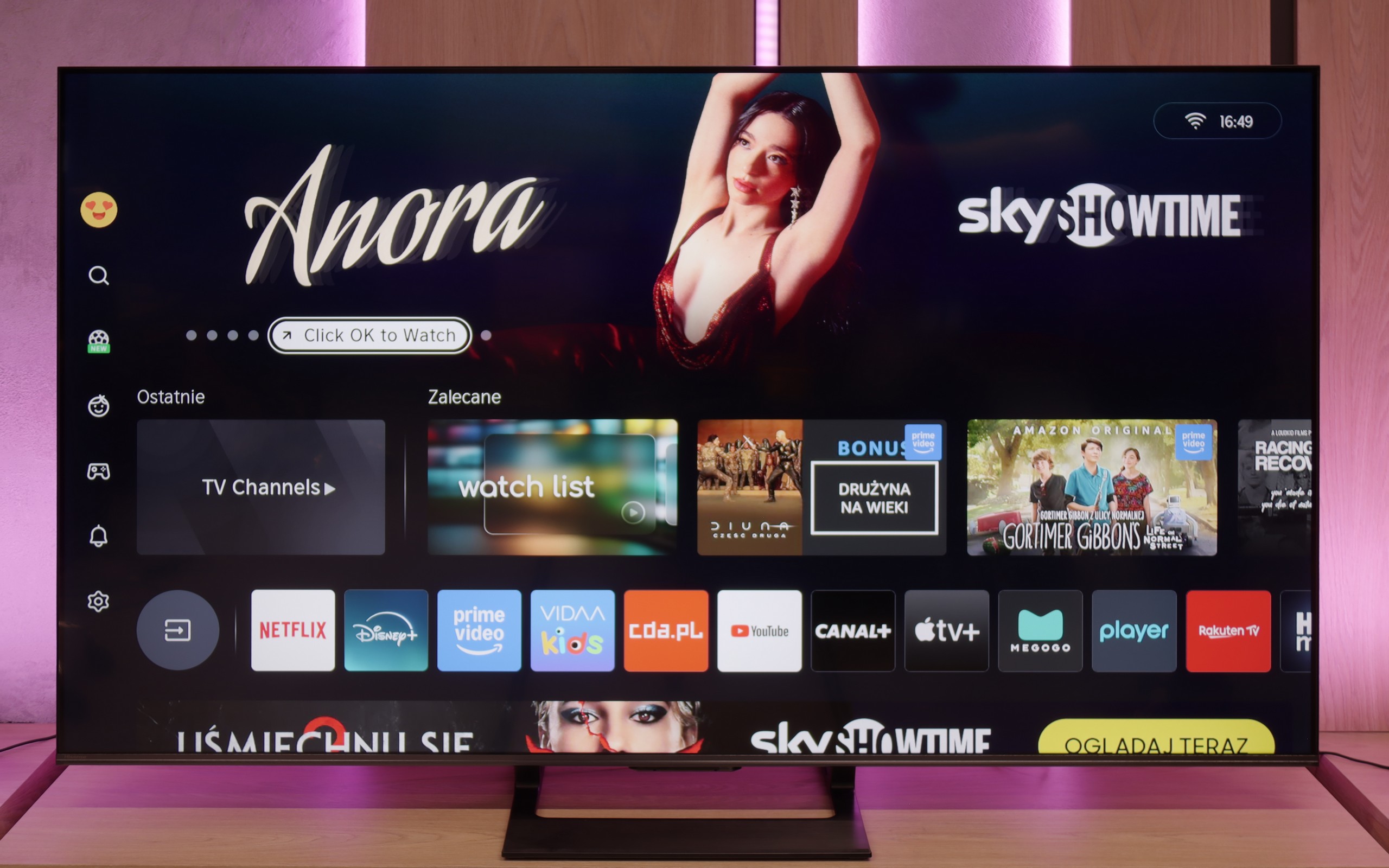

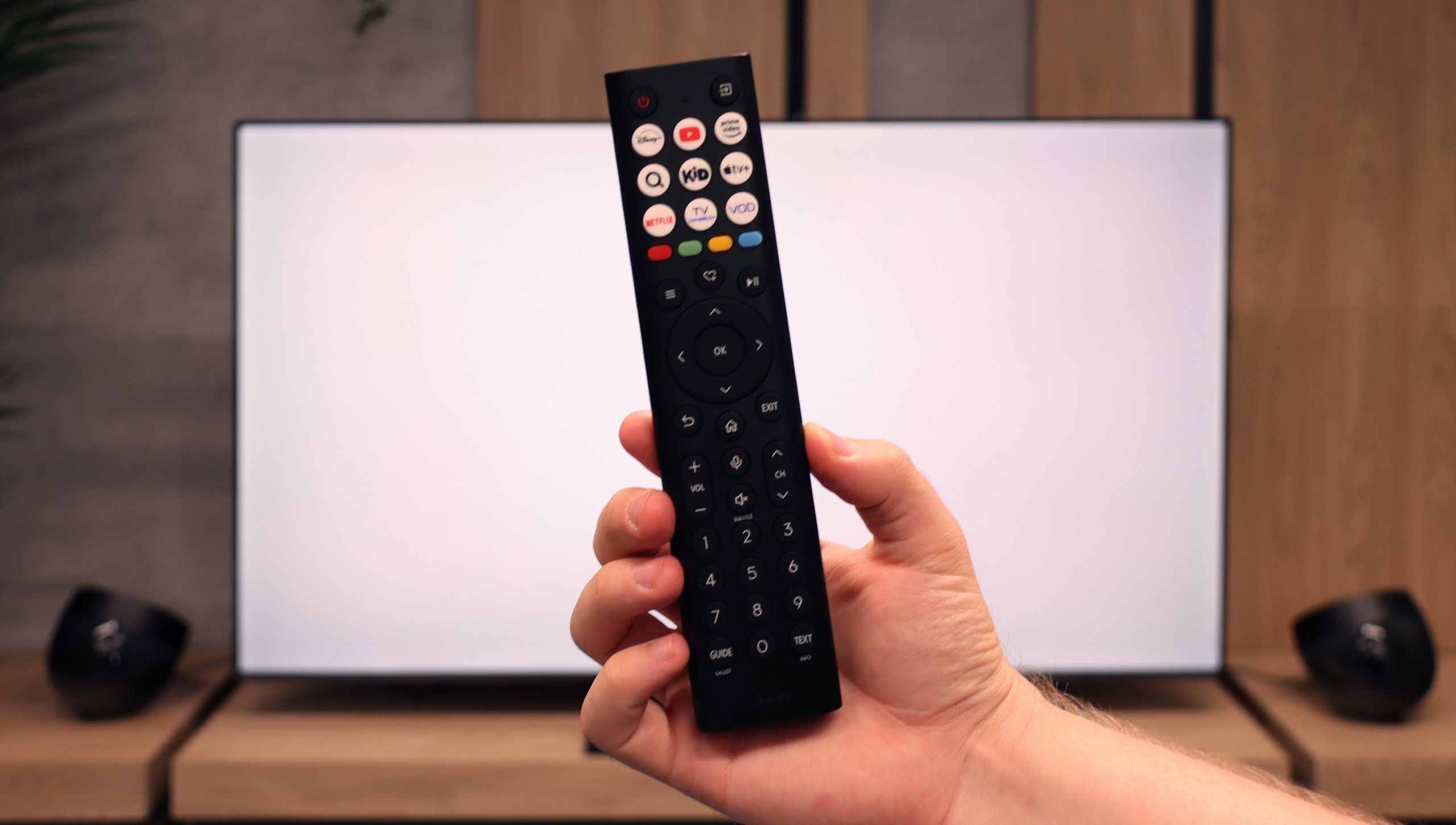
The device operates on the Google TV system, offering a wide range of features that enhance user comfort. Google TV, an extension of Android TV, provides personalised content recommendations based on watched programmes and user preferences. It allows easy access to popular streaming applications such as Netflix, YouTube, and Prime Video, as well as integration with the Google Play Store for additional apps. The system works with other Google devices, enabling control of the television using Google Assistant and integration with a smart home system.
In terms of connectivity, the television supports screen mirroring via Windows Miracast and AirPlay, allowing easy transmission of images from other devices. It also allows connection of a keyboard, mouse, and Bluetooth headphones, while simultaneously using headphones and the built-in speaker with separate volume control for both audio sources. The television remote operates on an RF basis, so there is no need to aim at the screen, although it is not backlit. Additionally, the television supports audio-only mode and teletext, although it lacks picture-in-picture (PiP) functionality.
Classic features of U7Q
Hisense U7Q has quite a lot to offer when it comes to classic TV features. You can record programmes to USB, connect external devices via Bluetooth without any hassle, and the interface – such as the EPG – is clear and easy to read. It may sound like something mainly appreciated by seniors, but the truth is that U7Q has practically everything needed for watching traditional television. The only thing missing here is the PiP (picture-in-picture) feature.
Smart TV U7Q: Vidaa
As for Smart features, the U7Q runs on the proprietary VIDAA system. And it must be admitted – it operates really smoothly. Voice search in Polish? No complaints. AirPlay and screen mirroring? They work without any issues as well. Of course, one must be aware that VIDAA is a closed system, so – as is often the case – it lacks some popular applications, especially those related to music. Therefore, before purchasing, it is worth checking whether all the applications you use regularly are available.
Playing files from USB
9.1/10
8.2/10
Supported photo formats:
Maximum photo resolution:


The television will play most files and video codecs, and with subtitles uploaded for the film, you can change the font size. The biggest downside here is the lack of support for less popular photo formats.
The built-in player in the U7Q fully meets the needs of most future users. The television handles Polish characters effortlessly and supports most popular video, audio, and image formats. If we had to nitpick, it would only be about the limited support for certain image resolutions – there are instances when files from a camera are not displayed correctly. So it's worth keeping this in mind if you plan to present photos straight from a DSLR or phone.
Apps
9.6/10
7.7/10














































Sound
5.8/10
7.2/10
- Subjective sound quality:5.8/107.2/10
- Dolby Digital Plus 7.1:
- Dolby True HD 7.1:
- Dolby Atmos in Dolby Digital Plus (JOC):
- Dolby Atmos in Dolby True HD:
- DTS:X in DTS-HD MA:
- DTS-HD Master Audio:
The sound quality in the television is rather average. The high tones are slightly distorted and can sound unclear, while the bass is almost non-existent. The sound is dominated by the mid tones, which makes the overall audio experience balanced, but lacking in fullness. On the plus side, it supports advanced audio codecs such as Dolby and DTS, improving compatibility with various audio sources and formats.
Sound is one of the bigger advantages of the U7Q. The television sounds really pleasant – there is a slightly noticeable bass, good tone balance, and definitely something more than just for "daily news watching." You can easily play music on it and simply sit back and enjoy the sound – of course in an entertaining form, not an audiophile one 😉. Full support for the most important audio codecs also deserves a big plus, as they worked flawlessly. A small exception is Dolby Atmos in TrueHD version, which didn’t fully play when connected to the home cinema, so if someone uses this format – it’s worth keeping in mind – it might be a software issue.


